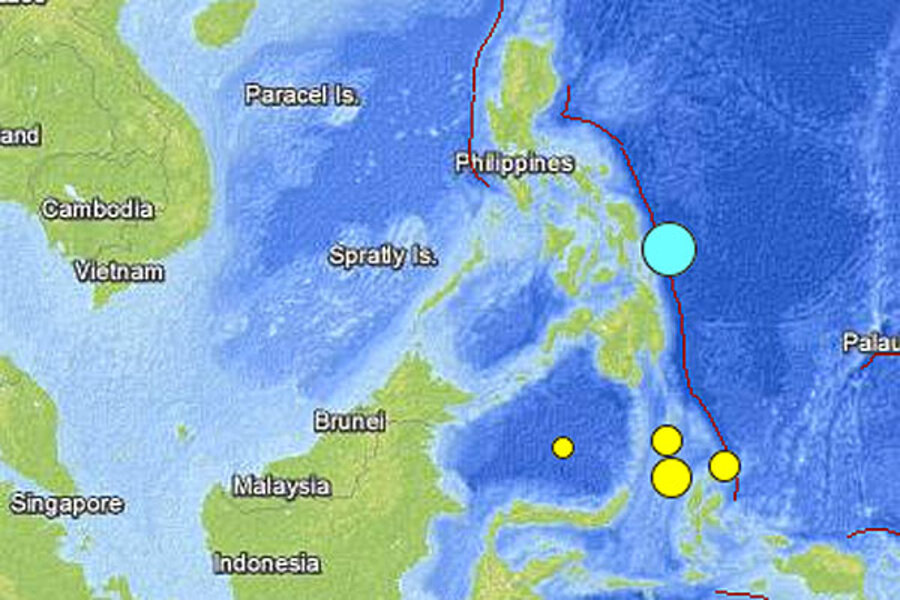Philippines 7.6 earthquake: One dead, tsunami alert lifted
Loading...
| Manila
A 7.6-magnitude earthquake struck off the Philippines' eastern coast late Friday, killing one person in a house collapse, knocking out power in several towns and spurring panic about a tsunami that ended up generating only tiny waves.
The quake set off car alarms, shook items off shelves and sent many coastal residents fleeing for high ground before the Pacific Tsunami Warning Center lifted all tsunami alerts it had issued for the Philippines and neighboring countries from Indonesia to Japan, and for Pacific islands as far away as the Northern Marianas.
"It was very strong. My house was making sounds," Bemruel Noel, a member of the Philippine House of Representatives, said in a telephone interview from Tacloban city on the eastern coast of Leyte island, where the quake set off a small stampede of residents.
"You talk to God with an earthquake that strong," he said.
RELATED: 5 most devastating quakes in Asia
Tacloban resident Digna Marco said the quake toppled a figurine on top of her TV set and that her son had to hold their desktop computer to prevent it from falling to the floor. The lights over her dining room were swinging, she said.
One house collapsed in southern Cagayan de Oro city, on the main southern island of Mindanao, killing a 54-year-old woman and injuring her 5-year-old grandson, who was being treated in a hospital, said the city's mayor, Vicente Emano.
The quake generated only very small tsunami waves of about 3 centimeters (just over an inch) along the eastern Philippine coast near Legazpi city and another nearby location, the Pacific Tsunami Warning Center said.
Initial tsunami warnings had prompted many residents to head inland.
"My neighbors and I have evacuated. We are now on our way to the mountains," fisherman Marlon Lagramado told The Associated Press before the warnings were lifted, in a telephone interview from the coastal town of Guiwan in the Philippine province of Eastern Samar.
Benito Ramos, a retired general who heads the country's disaster-response agency, said in an advisory broadcast nationwide that residents should be on the alert for more quakes.
"Don't sleep, especially those in the eastern seaboard ... because there might be aftershocks," he said.
The quake, with preliminary magnitude 7.6, hit at a depth of 34.9 kilometers (21.7 miles) and was centered 106 kilometers (66 miles) east of Samar Island, the U.S. Geological Survey said.
The quake knocked out power in several towns and cities across the central and southern Philippines, though it was restored in some areas later Friday, according to rescuers and local radio reports.
The Philippine archipelago is located in the Pacific "Ring of Fire" where earthquakes and volcanic activity are common. A magnitude-7.7 quake killed nearly 2,000 people in northern Luzon Island in 1990.
RELATED: 5 most devastating quakes in Asia
___
Associated Press writers Hrvoje Hranjski and Oliver Teves contributed to this report.
Copyright 2012 The Associated Press.







